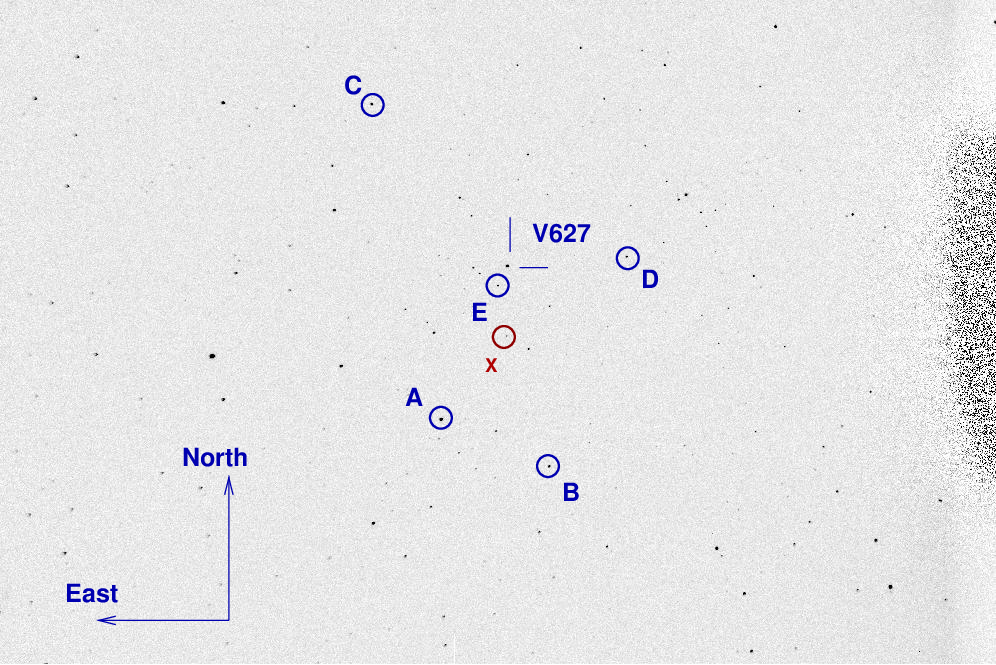
On the night of Aug 05/06, 2021, under good conditions, I acquired images of the cataclysmic variable star V627 Peg. One can find information about it at
No moisture condensed tonight, thank goodness. Perhaps the adjustment I made to the camera's window heater helped.
Christian Knigge is soliciting observations of this cataclysmic variable star at all wavelengths. The AAVSO has advertised for optical measurements, and I'm joining the effort.
The main setup was:
Notes from the night:
The object is located at
RA = 21:38:06.63 Dec = +26:19:56.0 (J2000)
A chart of the field is shown below. The size of the chart is about 31 x 26 arcminutes.

I've marked the location of several comparison stars as well. See
I'll use star "D" to shift my instrumental magnitudes to the V-band scale. It has a V-band magnitude (according to AAVSO chart X26768AQ) of 12.002, and (B-V) = 0.692.
The star marked "X" is an eclipsing binary of type EW, with a period of 0.36 days and amplitude of about +/- 0.3 mag in V-band.
I took a photo of the finder TV's screen when pointing to this target; this could be a useful reference for the future:

The sky value shows two very brief periods of cloud.
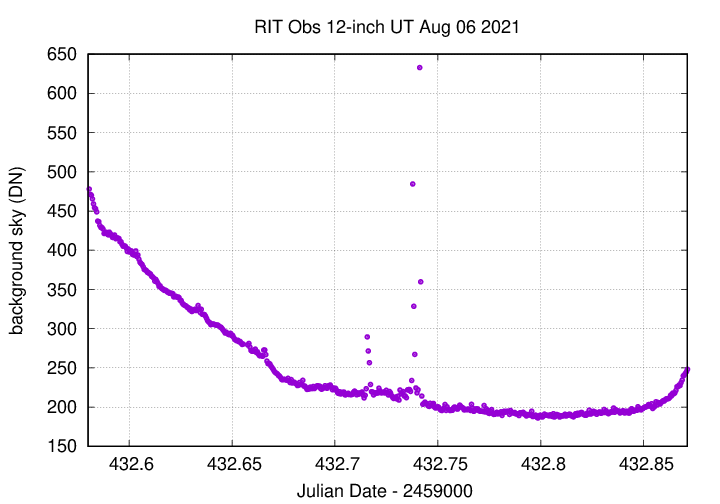
The FWHM graph below shows no significant drift.
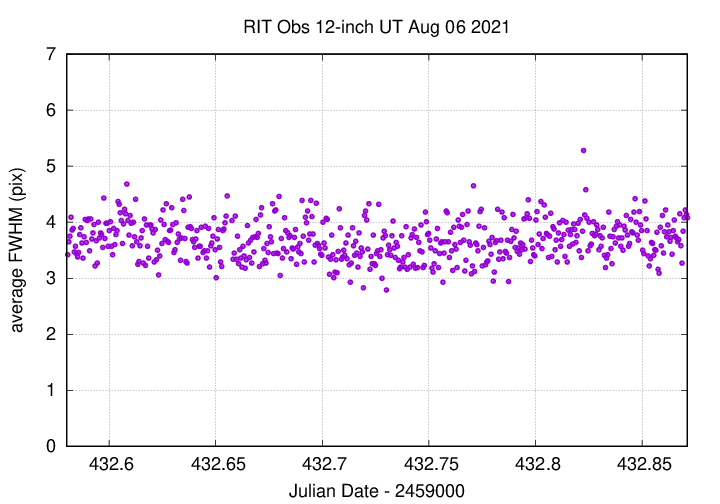
Using aperture photometry with a radius of 7 pixels in a V filter (binned 2x2, each pixel is 1.24 arcsec, so a radius of 8.7 arcsec), I measured the instrumental magnitudes of a number of reference stars and the target. Following the procedures outlined by Kent Honeycutt's article on inhomogeneous ensemble photometry, I used all stars available in each image to define a reference frame, and measured each star against this frame.
Sigma-vs-mag plots show that the floor was about 0.006 mag after I removed a few images with large outliers.
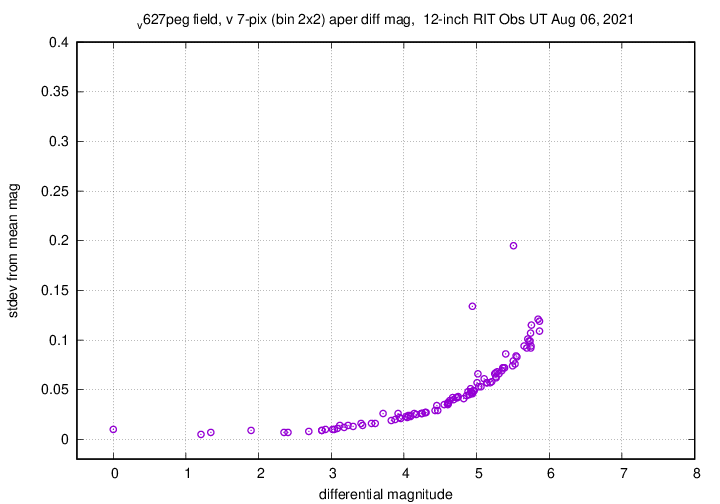
The change in zeropoint shows only a few outliers.

Here is the light curve of the object and several field stars in the V filter; I've shifted the instrumental magnitudes so that star "D" = 000-BJV-433 on AAVSO chart X26767AK has the value given by AAVSO as its V-band magnitude.
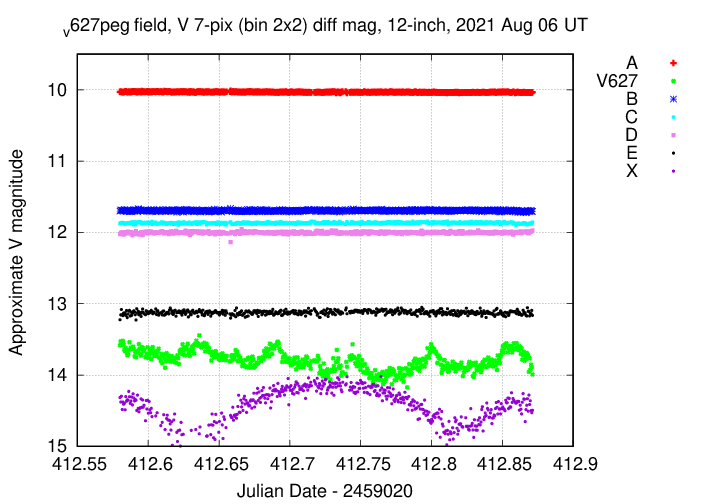
Here's a closeup, also showing the light curve of star "X", the EW variable just south of the target.
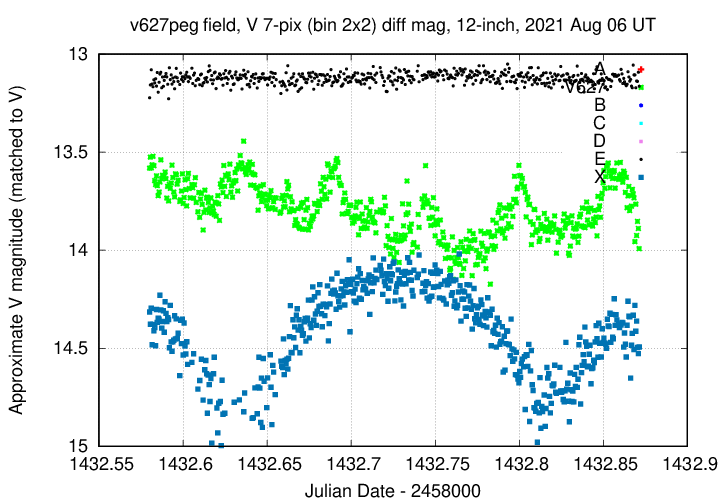
I have submitted these measurements to the AAVSO, CBA, and VSNet.
You can download my measurements below. A copy of the header of the file is shown to explain the format.
# Measurements of V627Peg made at RIT Obs, UT 2021 Aug 6, # in good conditions, # by Michael Richmond, # using Meade 12-inch LX200 and ATIK 11000. # Exposures 30 seconds long, V filter. # Tabulated times are midexposure (FITS header time - half exposure length) # and accurate only to +/- 1 second (??). # 'mag' is a differential magnitude based on ensemble photometry # using a circular aperture of radius 7 pix = 8.8 arcseconds. # which has been shifted so AAVSO 000-BJV-433 has mag=12.002 # which is its V-band magnitude according to AAVSO chart X26767AK. # # UT_day JD HJD mag uncert Aug06.08007 2459432.58007 2459432.58429 13.581 0.043 Aug06.08058 2459432.58058 2459432.58480 13.525 0.042 Aug06.08109 2459432.58109 2459432.58531 13.580 0.043
Last modified 8/06/2021 by MWR.